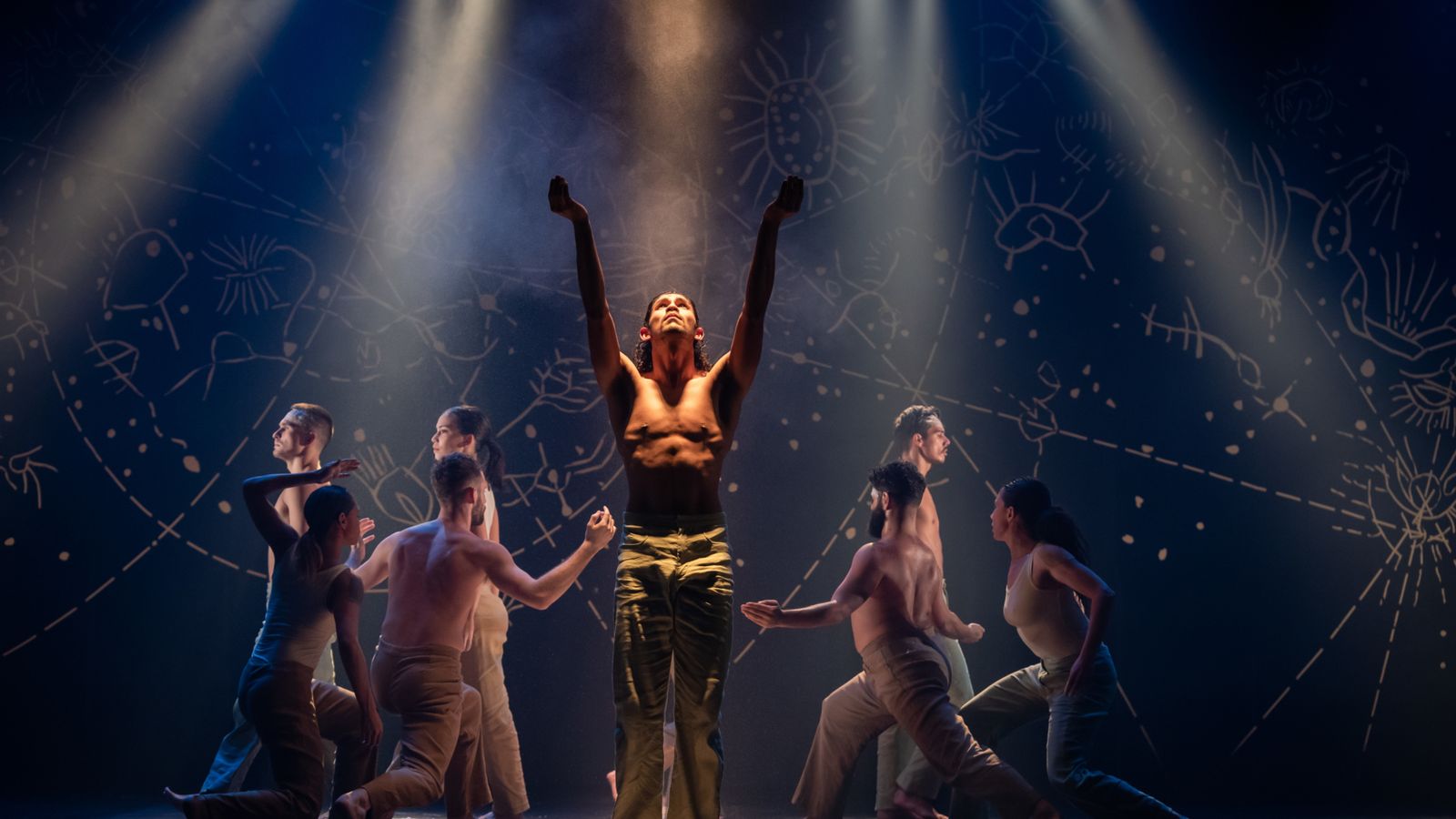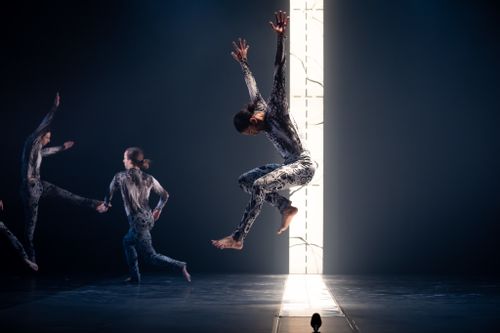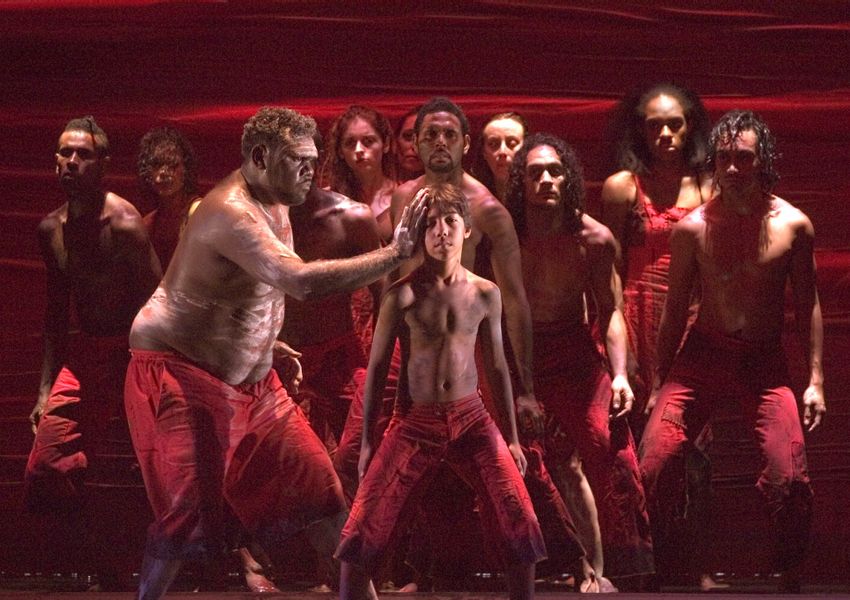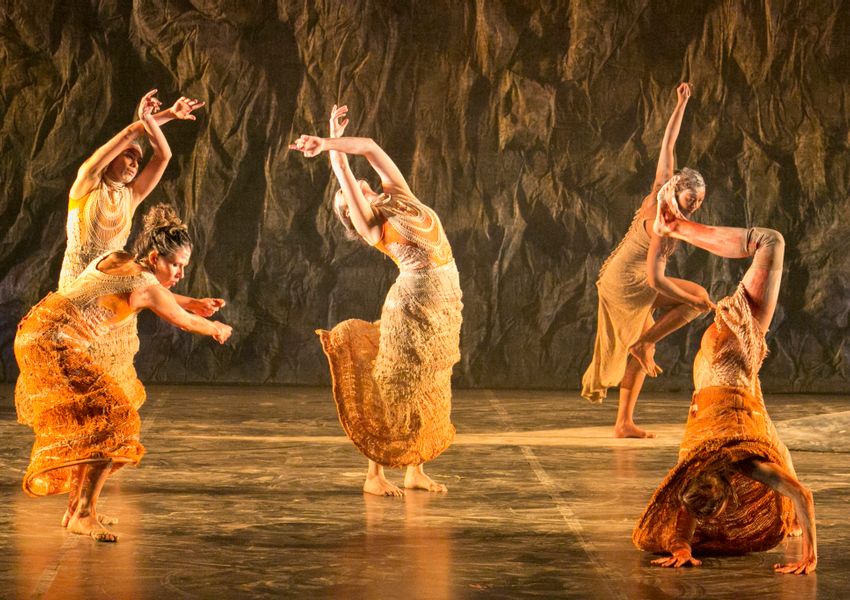
I use a lot of colour in Bangarra shows, I virtually never use colour in my other work.
Nick Schlieper is one of Australia’s most celebrated lighting designers who splits his life between Australia and Europe. After creating works with the company for more than 15 years, he reflects on the role Bangarra plays in anchoring him home.
How do you approach bringing Bangarra’s stories to life on the stage?
I almost always focus first and foremost on the story. I always start by doing my homework. Because dance is such an abstract medium, it’s as much the job of the lighting design to help tell the story as it is of any other element. It’s so easy to light dance and just make pretty pictures, but that’s the easy way out. You actually need to be subtly telling the audience where they are in a story the whole time. That spine is much more important to me.
How were you thrown into the world of Bangarra?
Bush, in 2003, was the first work I lit for Bangarra. I virtually don’t do dance. It’s a form of theatre I’m not all that interested in, so I would have taken a bit of convincing! Had it not been an Indigenous dance company, the answer would most likely have been no. I don’t remember the exact conversation, but it would have involved Stephen Page being very persuasive.

Putting Aboriginal culture on the map of white Australia. ... Just that single act alone is worth its weight in gold.
How do you think the company has changed in that time?
Sure, it’s become more sophisticated, which is partly to do with having more dancers and more money, more space and more time. But it’s never lost its heart. And some of its heart, years ago, had some rough edges, and I think it’s fantastic that they haven’t all been polished off. It’s still educating Australians in the stories that they don’t get at school, and at the same time presenting seriously beautiful work.
You work with some incredible companies across the world. How does working with Bangarra impact on your wider practice?
It’s a fabulous anchor. I spend so much of my life dividing my year between Australia and Europe. Bangarra is a core part of the reason I keep coming back. My work for Bangarra looks very, very different to my work just about everywhere else. The obvious difference is that I use a lot of colour in Bangarra shows, I virtually never use colour in my other work. I spent the first 15 years of my career in Australia with everybody hating my work because it was so Teutonic and cool and cold and distanced, not warm and fluffy and friendly. People who know my work well have often seen a show I’ve lit for Bangarra and literally not known it was me.
What do you think is Bangarra’s greatest achievement of the past 30 years?
Putting Aboriginal culture on the map of white Australia. First and foremost. Just that single act alone is worth its weight in gold.
What’s it like stepping back into the world of Unaipon after 15 years?
Oh, it’s a fabulous homecoming; I’d forgotten how much I like the piece! The new dancers have seized it. It’s great to see them performing choreography that is extremely familiar to me — exactly the same but adjusted slightly with a different lens on different bodies.

It’s still educating Australians in the stories that they don’t get at school, and at the same time presenting seriously beautiful work.



-
Lighting Design
Nick Schlieper
-
Lighting Design